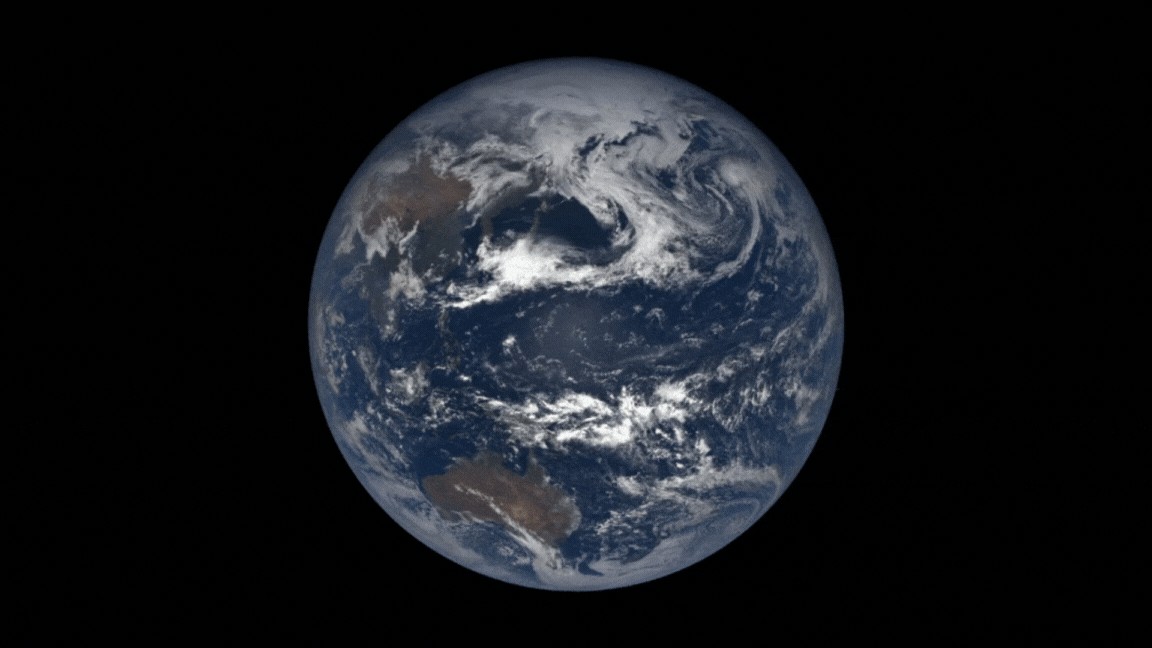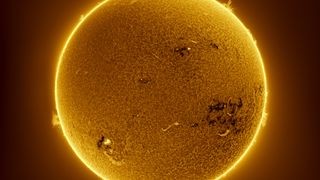As inhabitants of Earth, it’s easy to perceive our planet as stationary. We don’t feel the ground rushing beneath our feet, nor the sensation of hurtling through the vast expanse of space. Yet, contrary to our perception, Earth is in constant motion, embarking on multiple cosmic journeys simultaneously.
So, precisely How Fast Does The Earth Travel Around The Sun? The answer might surprise you and reshape your understanding of our place in the universe.
Early astronomers, in their quest to map the cosmos, initially proposed a geocentric model, placing Earth at the universe’s center. In this view, the sun, moon, and stars revolved around us. This model, however, struggled to explain certain celestial phenomena, such as the perplexing retrograde motion of planets. Retrograde motion, the apparent backward movement of a planet in the sky, puzzled early observers.
The realization that Earth is not the center of the universe emerged from a deeper understanding of these celestial movements. Retrograde motion is beautifully explained by the heliocentric model, where planets, including Earth, orbit the sun. As Earth, in its faster orbit, overtakes a slower-moving outer planet like Mars, Mars appears to move backward against the star field. This apparent reversal is an optical illusion caused by our changing perspective as we move along our orbital path.
 Animated image illustrating the Earth's full rotation as captured by NASA's EPIC camera, emphasizing the constant motion of our planet.
Animated image illustrating the Earth's full rotation as captured by NASA's EPIC camera, emphasizing the constant motion of our planet.
Further evidence for Earth’s motion comes from parallax, the apparent shift in the position of an object when viewed from different lines of sight. Imagine holding your finger at arm’s length and alternately closing each eye. Your finger seems to jump position relative to the background. Similarly, as Earth orbits the sun, our vantage point for viewing distant stars changes. By observing a nearby star in summer and again in winter, astronomers can detect a tiny shift in its apparent position. This parallax effect provides direct evidence of Earth’s orbital motion and allows us to calculate the distances to nearby stars.
Unpacking Earth’s Speed: Q&A with Planetary Scientist Simon Lock
To delve deeper into the intricacies of Earth’s motion, we consulted with Simon Lock, a research fellow specializing in planetary science, astrophysics, geophysics, and geochemistry at the University of Bristol.
What is Earth’s orbital speed around the sun?
“Earth completes its orbit around the sun at an average speed of approximately 67,100 miles per hour (107,900 kilometers per hour),” explains Lock. “To put this into perspective, that’s akin to traveling from London to New York in roughly 3 minutes.” This mind-boggling speed highlights just how quickly we are moving through space without even perceiving it.
Beyond orbiting the sun, how else is Earth moving?
Lock elaborates, “Our motion isn’t limited to just orbiting the sun. The entire solar system, including Earth, is also orbiting the center of the Milky Way galaxy at an astounding speed of about 447,000 miles per hour (720,000 km/h).” Furthermore, the Milky Way galaxy itself is not stationary; it’s moving relative to other galaxies in the universe. “Everything in the cosmos is in a perpetual dance, with mass constantly in motion at various scales.”
How does Earth’s orbital speed compare to other planets in our solar system?
“A planet’s orbital speed is intrinsically linked to its distance from the sun,” Lock clarifies. “Planets closer to the sun experience a stronger gravitational pull and therefore must travel faster to maintain their orbit.” Mercury, the innermost planet, races around the sun at approximately 105,000 mph (169,000 km/h), about 1.6 times faster than Earth. In contrast, Neptune, the farthest planet in our solar system, meanders at a more leisurely pace of about 12,200 mph (19,600 km/h), only 18% of Earth’s speed.
The Spin of the Earth: Rotation Speed Demystified
In addition to its orbital journey around the sun, Earth is also spinning on its axis, completing one rotation roughly every 24 hours. The speed of this rotation varies depending on your latitude.
At the equator, Earth’s circumference is approximately 24,901 miles (40,075 kilometers). Dividing this distance by 24 hours yields a rotational speed at the equator of about 1,037 mph (1,670 km/h). As you move towards the poles, this speed decreases. At a latitude of 45 degrees, the rotational speed is reduced to approximately 733 mph (1,180 km/h). At the North and South Poles, the rotational speed is virtually zero, as you would simply be spinning in place.
Space agencies utilize Earth’s rotation to their advantage for rocket launches. Launching eastward, in the direction of Earth’s spin, provides rockets with a significant speed boost, aiding their ascent into orbit. This is why spaceports like Cape Canaveral in Florida, located closer to the equator, are preferred launch sites for missions to the International Space Station (ISS).
Calculating Earth’s Orbital Velocity: A Geometric Approach
 A detailed view of the sun showcasing its fiery plasma surface and solar flares, highlighting the celestial body around which Earth orbits at incredible speed.
A detailed view of the sun showcasing its fiery plasma surface and solar flares, highlighting the celestial body around which Earth orbits at incredible speed.
Earth’s orbital speed, approximately 67,000 mph, can be calculated using basic geometry. Earth’s orbit around the sun is not perfectly circular but is slightly elliptical. For simplicity in calculation, we can approximate it as a circle.
To determine the distance Earth travels in one orbit (one year), we need to calculate the circumference of this circular path. The radius of this circle is the average distance between Earth and the sun, known as an astronomical unit (AU), which is about 92,955,807 miles (149,597,870 kilometers).
The circumference of a circle is given by the formula: C = 2πr. Plugging in the value of the astronomical unit, we find that Earth travels approximately 584 million miles (940 million kilometers) in one orbit.
To calculate speed, we divide the distance traveled by the time taken. Earth completes this journey in approximately 365.25 days. Converting this time to hours and dividing the total distance by the total time gives us Earth’s orbital speed: roughly 66,627 mph (107,226 km/h). This calculation aligns closely with the expert-provided figure of 67,100 mph, confirming the astonishing speed at which our planet orbits the sun.
The Sun and Milky Way’s Cosmic Dance
Even the sun, the center of our solar system, is not stationary. It orbits the center of the Milky Way galaxy, situated about 25,000 light-years away from the galactic center. The Milky Way, a vast spiral galaxy spanning at least 100,000 light-years, hosts billions of stars, including our sun.
The sun, along with the entire solar system, is estimated to be moving through the Milky Way at a speed of approximately 448,000 mph (720,000 km/h). Despite this incredible velocity, it still takes our solar system around 230 million years to complete one orbit around the Milky Way, a period known as a galactic year or cosmic year.
Furthermore, the Milky Way galaxy itself is in motion, heading towards a collision with our nearest galactic neighbor, the Andromeda Galaxy, in about 4 billion years. These two colossal galaxies are hurtling towards each other at a speed of about 70 miles per second (112 km/s).
Thus, the universe is a dynamic and ever-moving place, with Earth participating in multiple layers of motion, from its daily spin to its grand orbital journeys around the sun and the galactic center.
What If Earth Stopped Spinning? A Hypothetical Scenario
While we are safely anchored to Earth by gravity, the question arises: what would happen if Earth suddenly stopped spinning? Fortunately, NASA assures us that the probability of Earth abruptly halting its rotation is “practically zero” for billions of years to come.
However, hypothetically, if Earth were to cease spinning instantaneously, the consequences would be catastrophic. The atmosphere, oceans, and everything on the surface, not held down by bedrock, would continue to move eastward at the Earth’s original rotational speed. This would result in global winds of unimaginable force, sweeping across the planet, devastating landscapes, and causing widespread destruction.
A more plausible scenario, over billions of years, is a gradual slowing of Earth’s rotation due to the gravitational influences of the sun and moon. In this case, life would have ample time to adapt to the changing conditions. The ultimate outcome of a gradual slowdown would be a “sun-synchronous” rotation, where Earth would rotate once every 365 days, resulting in one side of the planet perpetually facing the sun and the other side perpetually in darkness, similar to the Moon’s synchronous rotation with Earth.
Moreover, a cessation of Earth’s spin could also lead to the disappearance of Earth’s magnetic field, which is believed to be generated by the planet’s rotation. Without the magnetic field, Earth would lose its auroras and the Van Allen radiation belts, leaving the surface exposed to harmful solar radiation and coronal mass ejections, posing a significant biohazard.
In conclusion, Earth’s speed as it travels around the sun is just one facet of our planet’s dynamic existence in the vast cosmos. We are participants in a grand cosmic dance, constantly moving through space at incredible speeds, even as we stand seemingly still on the surface of our dynamic planet.
Additional Resources and Reading
Bibliography
New Scientist, “How fast does Earth spin?” https://www.newscientist.com/question/fast-earth-spin/
NASA JPL, “How Fast Are You Moving When You Are Sitting Still?” 2007. https://nightsky.jpl.nasa.gov/docs/HowFast.pdf

